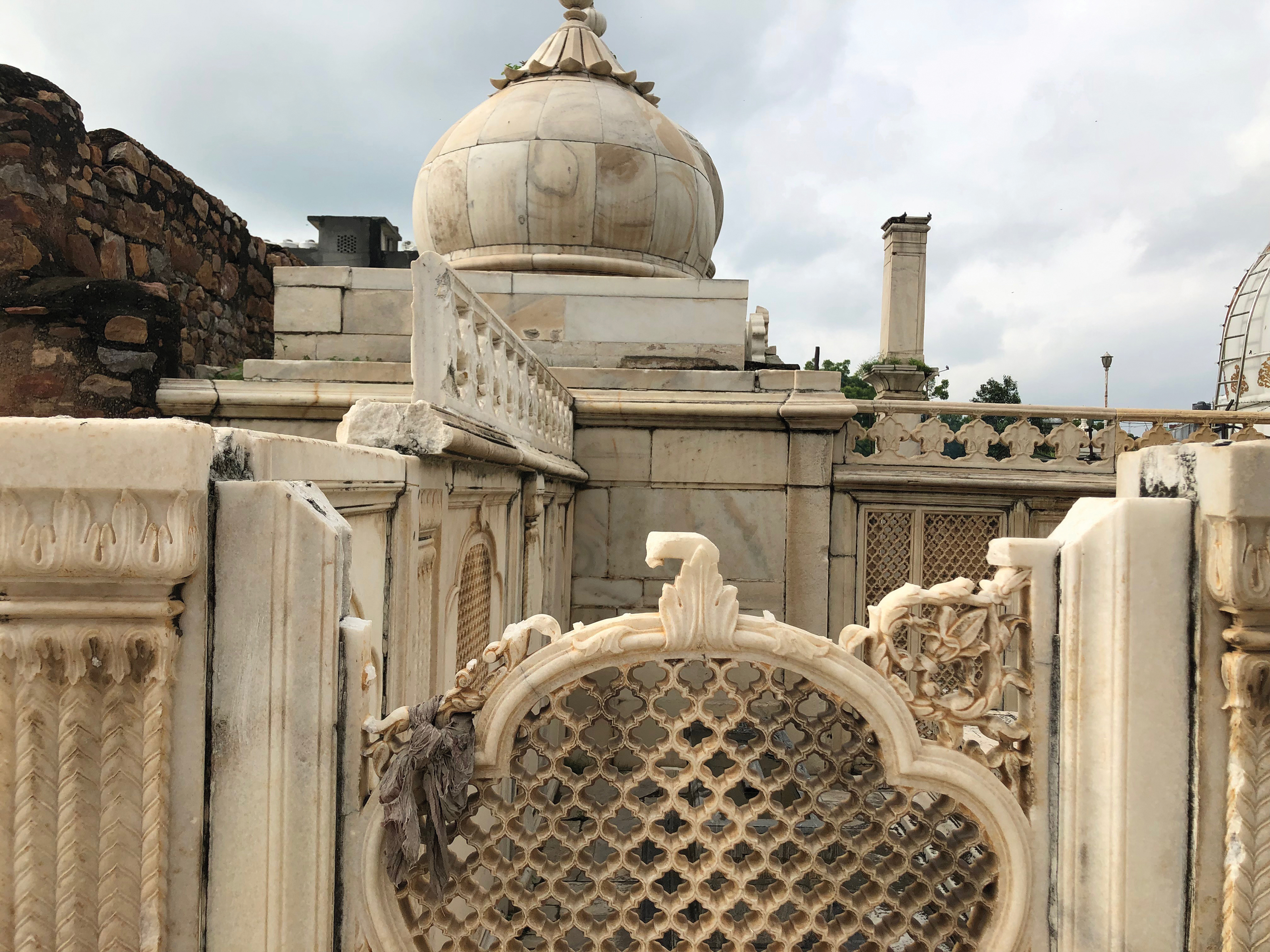
Delhi is dotted with dozens of monuments which hold historical significance, but are not often visited by tourists and are ignored by the administration, including the Archaeological Survey of India.
Zafar Mahal
Do you know which was the last monument built by a Mughal emperor of India? Built in the 18th century by Akbar Shah, and reconstructed by Bahadur Shah Zafar, Zafar Mahal was a summer palace in Mehrauli at a high altitude. Its distinctive feature is a huge arc large enough to allow elephants to enter, called Hathi Darwaza. Mughal emperors used to retreat here for pleasure and it was a private space, where no guard or other person without authorisation was allowed.
Akbar Shah II and Mirza Fakruddin (Bahadur Shah Zafar’s son) were buried in the backyard of the palace. While Bahadur Shah had earmarked a spot for his grave but he was exiled to Rangoon (Myanmar) and eventually buried there in November 1862.
“The Mahal is said to be a protected monument but neither tourists nor ASI care about the last Mughal monument. It has merely become a hub for people to play cards and other activities,” says Rajan Mishra, Team Associate, Travel Corporation of India.
Jahaz Mahal
Built during Tughlaq’s reign, Jahaz Mahal near Tughlaqabad fort was used as a sarai (guest house for travellers) in earlier times. Akbar Shah and Bahadur Shah Zafar visited the palace to witness firework displays. A waterfall fell into a pond called Hauz-i-Shamsi, built in 1700 AD by Nawab Ghaziuddin. Now, the walls surrounding the waterfall have houses leaning on them. Encroachments have made the pond stagnant and contaminated. The land belongs to Delhi Development Authority and the local festival Phool Walon ki Sair is held here by the Municipal Corporation Delhi.
“Three to four people visit, that too rarely. Officers from the ASI visit the site but there is no schedule or time-table,” says the guard, who hails from Gaya district in Bihar.
Ashoka’s Pillar
This was built by Emperor Ashoka in the 3rd century in Meerut. In 1356, Emperor Ferozshah Kotla shifted it to Koshuk Shikhar Palace which is now extinct. But first, it was broken into five pieces by the explosion of a powder magazine in 1713 AD, the pillar was almost demolished. The British government, after the 1857 revolt, restored the pillar and set it up in the Civil Lines area in 1867. Civil Lines has various British monuments like Mutiny Memorial. “This pillar is overshadowed by the one situated next to Qutub Minar and another in Ferozshah Tughlaq fort near Delhi Gate. The script on the pillar got defaced by the blast. The government isn’t interested in safeguarding such monuments and hence no security guard is seen here,” said Mishra, who has been a tour guide operator.
Old baoli
This water reservoir with stepwell near the Hindu Rao Hospital in Civil Lines was built by Feroz Shah Tughlaq in 1354 and acted as the only source of water for British officers and soldiers during the revolt of 1857. It was strategically built at a height surrounded by dense forest; rulers used the place as the hunting lodge. Now, as it crumbles due to seepage, even the locals don’t know about it. Rajan Mishra adds, “Various encroachments, trees and the outgrowth across the periphery of the baoli has made it worse. No agency has appointed a security guard. Restoration and recharge of its water reservoir is the need of the hour as it can help in rain water harvesting.”
Razia Sultan’s Tomb
Inside the narrow pathways in the Chandni Chowk’s Turkman Gate lies Delhi Sultanate’s only women ruler. Razia Sultan’s grave is unattended and neglected. Razia Sultan, who ruled Delhi from 1236 to 1240, was trained to manage the army and administer the kingdom. The walls surrounding the compound have been used to erect houses by the locals. Two graves can be found at the location: the other one is said to be of her sister Sajia. A rarely visited monument, it lies in Jama Masjid area that has undergone rapid commercialisation.
During a search of their vehicle, police found 1.068 kg of charas, 98 grams of…
The alleged assault is linked to a dispute over some staff members allegedly cutting the…
This will play a decisive role in providing villagers with legal proof of ownership and…
Hired to take care of his employer's dather, he had only begun working in the…
On Friday, Delhi's AQI stood at 374, with 11 of the 40 monitoring stations in…
Sharma said accident relief trains, along with top officials from the divisional headquarters, have already…